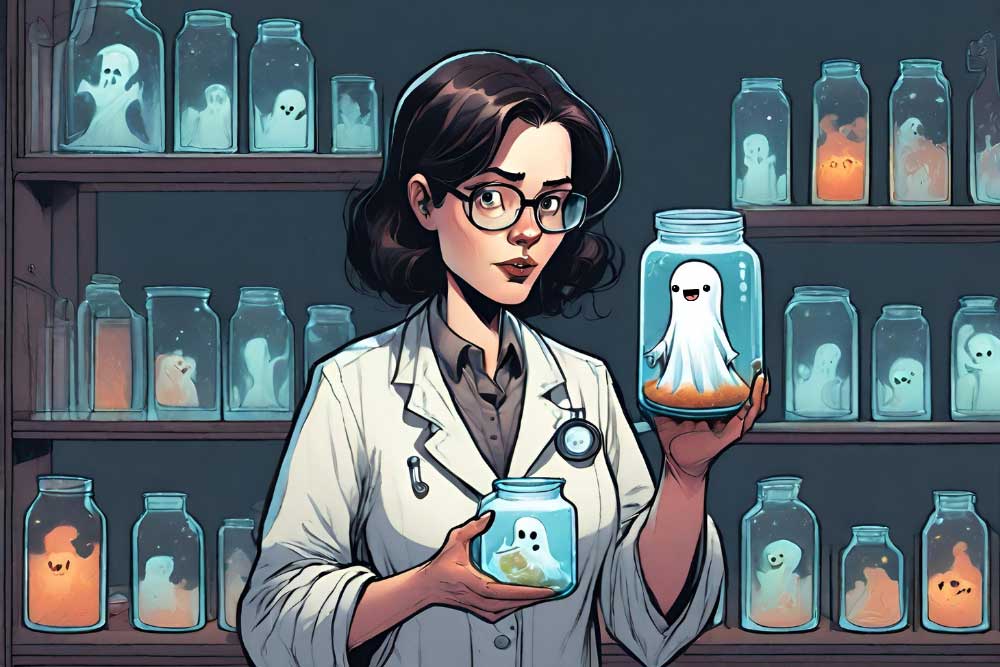
Scroll down to listen to this article.
Boo! This Halloween many of us will dress as spooky things, visit houses with creepy decorations, go into haunted houses, watch scary movies, and enjoy other horror-related entertainment. But being scared kinda sucks. Why do many of us actively subject ourselves to being scared on purpose?
One of the big draws of scary things is dichotomy: the contrast between two ideas that can’t both be true. When we watch a scary movie, we are safe in a theater, but feel the danger and emotion as if we were ourselves being chased by a shark with a knife (or whatever). In a haunted house we may get an even more visceral experience, as our neighbor jumps out at us with a rubber knife in his realistic shark costume. Knowing we are safe makes our brains bounce back and forth between danger and safety. Another big pull of Halloween scares is that they rely on expectations. Most of us would be pretty upset to come home and find a giant spider and some skeletons on our bed. But when given the proper context and expectation, we can be excited and find scary decorations fun and exciting.
Fear is the major emotion at play here, but what is fear? Our emotions can be roughly divided along two lines: valence and amplitude. Valence describes the positive or negative quality of an emotion and amplitude is how strong the emotion is felt. In this organization scheme, fear has a negative valence and a high amplitude, it makes us feel bad and we feel it strongly. On top of this, amplitude seems a little more persistent than valence, so there is a delay period where we still feel excited but can change from a negative to positive valence. So fear with the right context (such as a haunted house or scary movie) makes us switch between the negative valence of fear and the logical knowledge that we are safe.
We can look inside the brain to get a better understanding of what’s happening. There are two competing pathways that activate with fear, depending on the distance to danger. The midbrain pathway activates for close, immediate threats. It is the “fight or flight” response to fear. The frontal cortex is for threats that are further away and is in charge of planning and strategizing. With spooky halloween fears, these two systems are in direct opposition. Trying to overcome the midbrain pathway is hard, but rewarding. We are also rewarded when successfully surviving a scary situation. When we conquer our fear we have the high amplitude of fear combined with the positive valence of relief. So this Halloween, indulge in a little emotional hijacking and enjoy your fear a little bit!
Staff Writer / Editor Benton Lowey-Ball, BS, BFA
Listen to the article here:
References:
Anders, S., Lotze, M., Erb, M., Grodd, W., & Birbaumer, N. (2004). Brain activity underlying emotional valence and arousal: A response‐related fMRI study. Human brain mapping, 23(4), 200-209.
Dewey, J. (1894). “The theory of emotion: I: Emotional attitudes”. The Psychological Review. 1(6), 553–569. https://doi.org/10.1037/h0069054
Nummenmaa, L. (2021). Psychology and neurobiology of horror movies. PsyArXiv. https://doi.org/10.31234/osf.io/b8tgs



